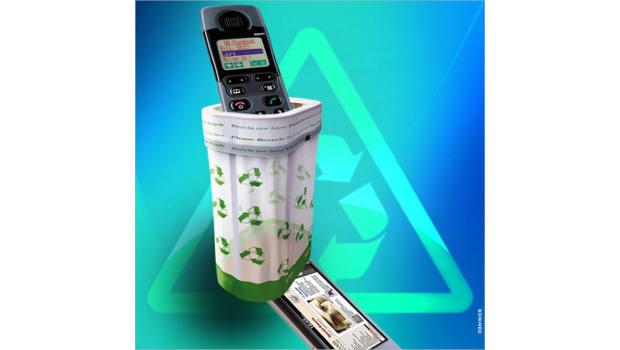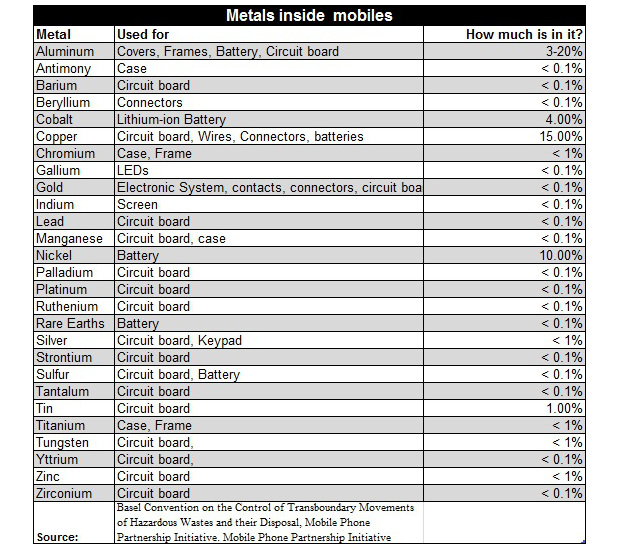Mobile phones and accessories contain a variety of toxic materials including lead, nickel, mercury, manganese, lithium, zinc, arsenic, antimony, beryllium and copper. Most of these metals are highly toxic to humans and the environment.
Here we detail the ill effects of each of these metals and chemicals that are present in cell phones – a reason why you should give your old phone for recycling, and not throw it in the dustbin.
The effects of lead poisoning are well known. If absorbed into the bloodstream in sufficient quantities lead, which is used in the circuit boards of mobile phones, causes serious liver and kidney damage in adults, and neurological damage in children.
Nickel, a substantial quantity of which is present in handset batteries, causes cancer. Similarly, mercury (not mentioned in the table) is another dangerous substance found in batteries, especially in older devices. Even a small amount of mercury can harm humans adversely. Though the use of mercury has been reduced in cell phones to a great extent, it is present in fairly large quantities in older phones.
Magnesium induces neurochemical changes and has been identified as a contributing factor to developing Alzheimer’s. Manganese, as the table shows, is used in making circuit boards and case of mobile phones.
Although Li-Ion batteries are free of heavy metals (lithium has a low atomic number), lithium’s high instability can create environmental problems. When exposed to water, which is present in most landfills, the metal can burn, causing underground fires that are difficult to extinguish.
Zinc is good for health in small quantities and is often used in medicines. However, zinc products contain another metal called cadmium. This is because zinc and cadmium are chemically similar and often occur together in nature. Exposure to high levels of cadmium over a long time can lead to kidney failure.
Arsenic compound Gallium Arsenide is used in LEDs. Arsenic is a well known poison. When the concentration of Arsenic in water increases beyond 10 parts per million it becomes dangerous. In fact, Arsenic poisoning is common in our part of the world.
Antimony, used mainly as a fire retardant, is known to be very poisonous, and the effects of antimony poisoning are similar to those of arsenic poisoning.
Beryllium, used for cooling (heat sink), is corrosive to tissue and can cause a chronic life-threatening allergic disease called berylliosis in some people.
Copper fortunately is non toxic and is in-fact necessary for a healthy life. Apart from copper, cell phones also contain small amounts of precious metals like iridium, silver and gold, which make it attractive for recycling companies to be in this business.

How to discard cellphones
Today, most major handset manufacturers such as Samsung, Nokia, Apple and LG run mobile recycling programmes. You can simply walk into the store of any of these companies and give your old phone, and you can be sure the phone will be recycled properly. You can also exchange your old phone and get a discount on a new device.


